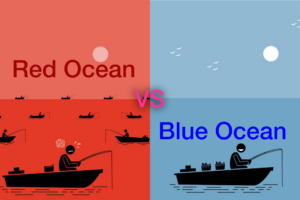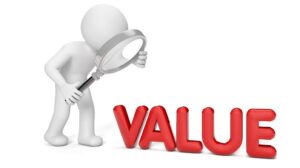In the midst of this current global crisis, we have seen a range of different behaviors from businesses in regard to pricing, ranging from price gouging, which can frustrate and alienate customers, through to heavy discounting which can start price wars and erode cashflow.
In this article, I would like to highlight some key principles based on my experiences and observations as a strategic growth consultant and pricing expert within multiple industries across NZ and Australia;
- Make sure your pricing is aligned with your overall commercial strategy and do NOT make sudden reactive moves that are not supported by your strategy.
- Cost plus pricing can be a poor model to adopt during times of disruption as customer demand does not necessarily move in line with changes in your cost structure.
- If you have a value based pricing model, you may need to reassess the value calculations during times of hardship, and potentially revisit your customer segmentation models.
- If affordability is in decline, this will have a direct correlation to price sensitivity (or elasticity) will can lead to your customers being less loyal & shopping around more for the best deal. Have you assessed your competitors pricing models to ensure that you are still pricing appropriately based on relative value?
- HBR published analytics suggesting that for every 1% increase in price equates to an average 11.1% increase in operating profit (assuming no volume loss). During times of growth & prosperity, this seems like a great way to increase your bottom line, but when your customers are already hurting financially this can have a detrimental impact on volumes. And so it’s important to price fairly and compassionately during these times (rather than price gouging) as it will affect customer sentiment towards your business long after the difficult times have passed.
- On the flip side, if a 5% price reduction were to result in a 10% increase in sales, then is this the smart move instead? Well it depends – how will your competitors react and is it likely to start a price war (a race to the bottom!)? What impact would such actions have on the perceived value of your products / services? Lowering prices undoubtedly conditions customers to expect this to continue into the future, which resets willingness to pay, and therefore putting prices back up can be a difficult and time consuming process
- Rather than offering discounts to improve sales, have you considered providing greater value? If this is done using tactical initiatives in conjunction with effective value messaging, it can maximise short term growth opportunities without the risk of conditioning customers to greater value for a lower price over the long term.
- Where you do decide to offer discounts, ask for something in return e.g. commitments to term or volume; subscriptions are a great way to guarantee revenue streams.
- However, do look to monetise all value adding features and functionality of your value proposition (not just the product) e.g. after sales service, trust & reliability, reputation – high customer rating scores differentiate you from the competition. Bundling features is a great way to achieve this monetisation.
- INNOVATE in order to grow value of your proposition which allows you to gain competitive advantage and MONETISE this incremental value to grow your revenue.
- “There is often a gap between the ‘perceived’ value – the value the market has of a supplier’s product/services – and the ‘actual’ value that a product and service can create. It is the role of the marketing and sales teams to help change these perceptions.” – Francois Delvaux
- Effective sales training and value messaging can help close this gap and educate customers on the true value that your product / services create rather than making comparisons to your competitors’ pricing in relation to your own.
- Be aware of clauses within customer contracts around annual price increases, for example, and use these as an opportunity to reach out to customers to assess their situation. Perhaps you make a decision to freeze prices for the year in the context of customers’ ability to afford higher prices, but this should be clearly communicated so that they can appreciate this, which should earn you some goodwill from the customer once things have improved and prices start to increase again.
- Now is a great time to assess your reward / loyalty programs as part of your value proposition ensuring it is well communicated to customer, clear and transparent, and achieving the desired retention strategy and volume growth.
- I’ve saved one of the MOST important and business critical points till last; how well are you utilising your internal data and analytics to understand trends in customer behaviour, product mix, and price elasticity? This is your first and most accurate indicator of measuring changes in willingness to pay and customer segmentation. Customer feedback may be telling you that prices are too high and you are ripping them off (in the hopes of getting a cheaper price), but the data will tell you whether or not you are pricing to value based on customer behaviour.
Please feel free to reach out to me if you are looking for some pricing expertise from an experienced strategic growth advisor who has successfully built and implemented new pricing strategies for many businesses across the NZ, Australia, and the UK.
You can book an exploratory call to see how we can assist your business by clicking on this link.






